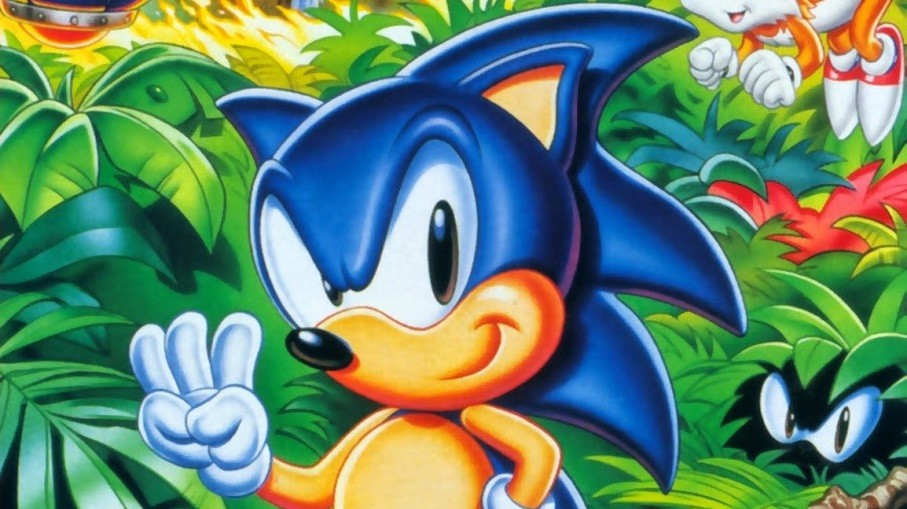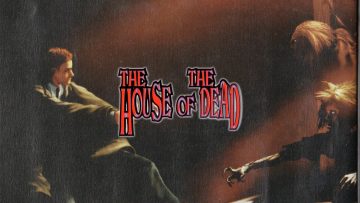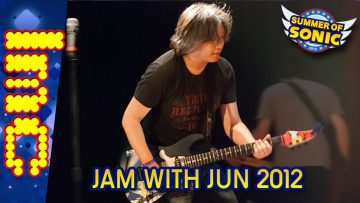
In-Depth: Hedgehog Day
It’s time for a new In-Depth article, where we do a case study on a particular gaming topic, usually Sonic, using research and the historical record.
This month’s edition is a subject that certain Sonic fans are aware of. Hedgehog Day has been a staple of the Sonic franchise for decades now, especially in the Sonic community, and for good reason. But it didn’t start out this way.
The origins of Hedgehog Day can be traced back to 1992, when Al Nilsen and his marketing team at SEGA decided to celebrate the worldwide release of Sonic the Hedgehog 2 with a hyped worldwide event dubbed “Sonic 2sday”, which was on November 24th, 1992. The event is probably just as famous, if not more famous, than Hedgehog Day. In the Console Wars book, we learned more about how “Sonic 2sday” came about, and just how much of an impact it had on the video gaming industry:
“We’re going to start in Japan, move to Europe, and then end in the US,” said Sega marketing director Nilsen to Schroeder, who was the project manager of “Sonic the Hedgehog.”
“No trucks, no boats: everything will be delivered by plane exactly one day before. … we’re going to have the world’s first global launch, and in the process we’re going to break every single sales record,” said Nilsen.
They kicked around a couple of ideas about what day the global launch should be, and that’s when Nilsen came up with an idea that possibly changed the way games were released and marketed ever after.
“No, it should be Tuesday, and we’ll call it Sonic 2sday,” he said.
Sonic 2sday landed on Nov. 24, 1992. Before then, video game release dates were all over the place, and retailers just got them when they got them. But Sonic 2sday implemented a method to the madness.
Harris writes:
… the idea of a coordinated worldwide release might have seemed interesting but irrelevant. But the point of the global launch wasn’t to dazzle with concept; the point was that the concept created connection.
Normally, with games released at different stores on different days, customers couldn’t help but feel like these things sort of fell out of thin air. But to know the exact date that something would be arriving, to have it circled on the calendar ahead of time, gave the gift of anticipation.
…
It was a marketing ploy, yes, but it worked in the same self-fulfilling way as a blockbuster film did. They’re not called “blockbusters” just because of their budgets; rather, it’s because of the event-like, don’t-be-left-out way that they are marketed, which makes people rush to the theater for the opening weekend, which then makes more people rush to the theater when they hear how big that opening weekend was. The art of the blockbuster is that it popularizes something before it even exists, and though Sonic 2 was still months away from completion, Sonic 2sday gave [former Sega North America CEO Tom Kalinske] and company an opportunity to unleash the biggest blockbuster the video game world had ever seen.
Thanks to “Sonic 2sday”, video games frequently release on Tuesdays in the US. But SEGA didn’t stop with the Sonic events there. Although it wouldn’t reach the levels of recognition that “Sonic 2day” did, Hedgehog Day became a noteworthy day on the Sonic calendar two years later.
After being developed for two years, Sonic the Hedgehog 3 was due to be released. Although the game had to be split into Sonic 3 and Sonic & Knuckles, the latter of which would release later in the year, there was another opportunity to hype up the release of a game on a single day. It may have been USA-only, but it was a date that Americans recognise immediately: Groundhog Day, which falls on February 2nd. It fell on a Wednesday in 1994. Just like Sonic 2’s release event got a punny name, so did Sonic 3’s. It was also the first region to get Sonic 3 anywhere. And for the first time, the most infamous place to celebrate Groundhog Day, Punxsutawney, Pennsylvania, got into the gaming spirit. The Sonic balloon from the Macy’s Parade was on display, and attendees could even try out the game themselves at booths. Even the inner circle for Punxsutawney Phil, Punxsutawney’s infamous groundhog, tried out the brand new game from SEGA.
Hedgehog Day has gotten more recognition from SEGA than “Sonic 2sday” did. SEGA has marked Hedgehog Day often, nearly every single year in this decade. Originally, the “holiday” served to hype up Sonic 4. In 2010, it was one of the last official acts by SEGA in the lead up to the announcement of Sonic 4: Episode 1. In 2015, a Sonic Boom episode called “Hedgehog Day” premiered. Coincidentally, the plot was a giant reference to the movie Groundhog Day. And thanks to SEGA’s revival of Hedgehog Day, the day continues to get a following from fans alike, with Sonic streams and more every February 2nd. Although Sonic 4’s saga is now but a memory, SEGA still marks the occasion with a blog post and/or video every year. Hedgehog Day turns 25 in 2019.
Happy Hedgehog Day!
This article was originally written for TSSZ News.



![[ID: aeVPJEnbt50] Youtube Automatic](https://lastminutecontinue.com/wp-content/uploads/2024/06/id-aevpjenbt50-youtube-automatic-360x203.jpg)
![[ID: LxExQvh_lEE] Youtube Automatic](https://lastminutecontinue.com/wp-content/uploads/id-lxexqvhlee-youtube-automatic-360x203.jpg)


Groundhog day is not untill tomorrow but I’m sure SEGA has a explanation about splitting both games at the time about sonic 3 and sonic 3 and knuckles.
I think it was mainly because the game’s file size got too big to fit on the cartridges they had, but the Genesis/Mega Drive could still handle a game that big. The compromise was lock-on technology.
Is that the reason why they make both versions of the game? You know now I see why they try to make a extra file for the system.
The article went live at midnight on February 2nd in my time zone.
It may not be the 2nd for everyone yet.
Well I know what that day means so I see why you made this article because of your time zone.
Actually Sonic sees his Shadow more times than once a year even before and after the first day of spring…..
….. And he calls it a Faker!
Come to think of it, Hedgehog Day would be a really good day for a new level announcement from the Sonic Mania crew. (Maybe a release date if we’re lucky?)
Donnie, doesn’t the word, “infamy/infamous” mean well-renowned in a NEGATIVE way?
Apparently it does….=S
Well, failure at English redeemed. It has been fixed. lol
This is kinda weird. In the Sonic the Hedgehog 3 World Premier, it states that the game was “shipped” to 13 million Sonic fans (0:34)
Now, in Wikipedia, it states that Sonic 3 sold 1.02 million copies, which is pretty good for the time, but far far worse than the other classic Sonic games. It always seemed strange to me considering it was released when the series popularity was pretty much at an all time high. It links this source: http://www.the-magicbox.com/Chart-USPlatinum.shtml
Which, interestingly enough, says “since 1995.” but Sonic 3/& Knuckles were released in ’94. I tired looking up solid numbers from other source, to no avail.
So is it counting units sold only in ’95 and upwards? It would actually explain why Sonic & Knuckles has higher numbers (1.24m) since it released closer to the end of the year.
I’d be interested to know if anyone knows anything about this. Since Sonic 3’s relatively low sales always seemed bizarre to me.
If we end up seeing a new (returning) zone from Sonic Mania on the livestream today, my bet is that it’ll be Ice Cap.
Fingers crossed!
I thought we were getting some Sonic Mania or Project Sonic 2017 news today. 🙁